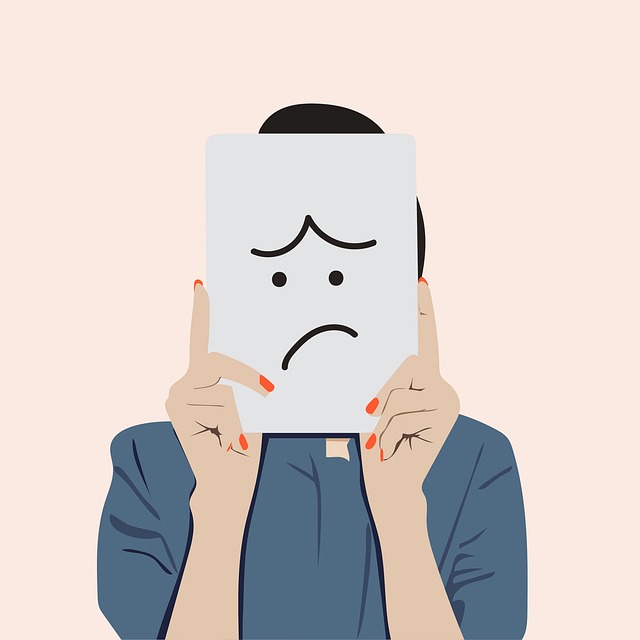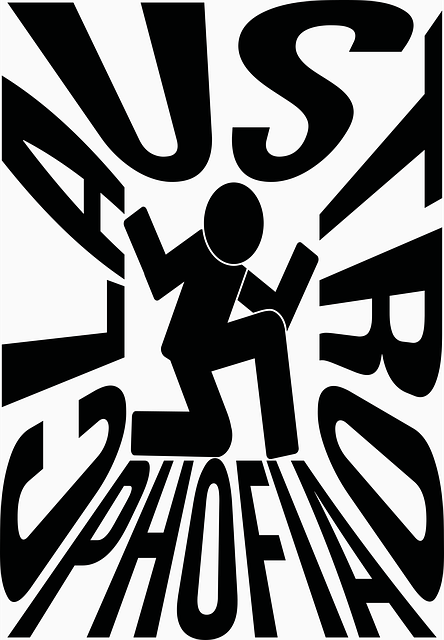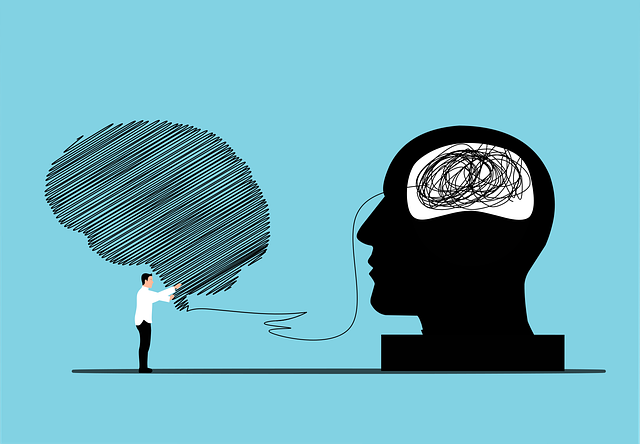CBT therapy is a highly effective treatment for Obsessive-Compulsive Disorder (OCD), addressing negative thought patterns and behaviors. Through structured sessions, patients learn to identify and challenge unhelpful cognitive distortions, reduce compulsions, and improve overall mental health. Key techniques include keeping a symptom journal, exposure and response prevention (ERP), relaxation training, and cognitive restructuring, all aimed at empowering individuals to manage OCD symptoms effectively over the long term.
Obsessive-Compulsive Disorder (OCD) affects millions, characterized by intrusive thoughts (obsessions) and repetitive behaviors (compulsions). Fortunately, Cognitive Behavioral Therapy (CBT) offers a highly effective approach to managing OCD. This article explores the science behind CBT, its direct link to OCD treatment, and detailed strategies like identifying triggers, challenging thoughts, ERP techniques, building coping skills, and long-term recovery. Discover how CBT therapy empowers individuals to overcome OCD and reclaim their lives.
Understanding Obsessive-Compulsive Disorder (OCD)

Obsessive-Compulsive Disorder (OCD) is a mental health condition characterized by intrusive thoughts and repetitive behaviors that individuals feel compelled to perform. These obsessions and compulsions significantly impact daily life, causing distress and impairing normal functioning. OCD can manifest in various ways, such as excessive worry about contamination, the need for symmetry or order, or recurring thoughts of harm.
Cognitive Behavioral Therapy (CBT) is a highly effective treatment approach for OCD. It helps individuals identify and challenge unhelpful thought patterns and behaviors associated with their obsessions. Through CBT, patients learn to manage anxiety, acquire coping strategies, and gradually reduce the frequency and intensity of obsessive thoughts and corresponding compulsions. This tailored therapy enables those affected by OCD to regain control over their lives and improve overall well-being.
What is Cognitive Behavioral Therapy (CBT)?

Cognitive Behavioral Therapy (CBT) is a highly effective form of psychotherapy that focuses on identifying and changing negative thought patterns and behaviors. By challenging and modifying these thoughts, CBT helps individuals manage their emotions and reduce maladaptive behaviors associated with various mental health disorders, including obsessive-compulsive disorder (OCD). This therapy encourages patients to recognize the connection between their thoughts, feelings, and actions, enabling them to develop healthier coping strategies.
The core principle of CBT is that our thoughts significantly influence our emotional states and subsequent behaviors. In the context of OCD, CBT aims to help individuals understand the relationship between intrusive thoughts or obsessions and the compulsive behaviors they trigger. Through structured sessions, patients learn to identify unhelpful cognitive distortions, question their validity, and replace them with more realistic and balanced thoughts. This process empowers individuals to resist performing compulsive rituals, thereby reducing anxiety and improving overall functioning.
The Link Between CBT and OCD Treatment

Cognitive Behavioral Therapy (CBT) has established itself as a highly effective treatment approach for obsessive-compulsive disorder (OCD). The link between CBT and OCD treatment is rooted in its ability to challenge and modify unhelpful thought patterns and behaviors that underlie the condition. By identifying and changing distorted thinking, CBT empowers individuals with healthier cognitive processes, reducing the impact of obsessions and compulsions.
Through structured sessions, CBT therapists help patients understand the relationship between their thoughts, feelings, and behaviors. This process involves recognizing repetitive and irrational beliefs, often referred to as cognitive distortions, which contribute to OCD symptoms. By learning to manage these thoughts and associated anxieties, individuals can gradually decrease engaging in compulsive rituals, leading to improved overall functioning and a better quality of life.
Identifying OCD Triggers and Thoughts

Identifying OCD Triggers and Thoughts is a crucial step in Cognitive Behavioral Therapy (CBT) for managing obsessive-compulsive disorder (OCD). Individuals with OCD often experience intrusive thoughts or distressing obsessions that trigger a range of compulsive behaviors. Through CBT, patients learn to recognize these triggers and understand the connection between their thoughts, feelings, and actions.
By keeping a journal to track obsessions, compulsions, and associated triggers, individuals can identify specific situations or mental states that precipitate OCD symptoms. This awareness enables them to challenge unhelpful thought patterns and develop healthier coping mechanisms, ultimately reducing the impact of OCD on daily life.
Challenging Negative Thought Patterns

Cognitive Behavioral Therapy (CBT) is a highly effective approach to treating obsessive-compulsive disorder (OCD). At its core, CBT focuses on challenging and modifying negative thought patterns that contribute to OCD symptoms. Individuals with OCD often experience intrusive thoughts and beliefs that trigger intense anxiety. Through CBT, individuals learn to recognize these unhelpful cognitive distortions and replace them with more realistic and balanced perspectives.
This process involves identifying automatic negative thoughts—quick, instinctive judgments that arise in response to specific situations or triggers. For example, someone with OCD might have a persistent fear of contamination, leading to a negative thought like “I’m not clean enough.” CBT helps individuals question the validity of these thoughts, encouraging them to gather evidence for and against their concerns. By doing so, they can start to see these beliefs as exaggerated or irrational, paving the way for healthier thinking patterns and reduced OCD symptoms over time.
Behaviors and Routines in CBT for OCD

Cognitive Behavioral Therapy (CBT) is a highly effective approach to treating obsessive-compulsive disorder (OCD). At its core, CBT for OCD focuses on identifying and modifying maladaptive thoughts and behaviors that contribute to symptoms. Behaviors in CBT refer to repetitive actions or rituals performed in response to obsessions, such as excessive handwashing or checking. These behaviors are often designed to reduce anxiety temporarily but reinforce the obsessive thoughts, creating a cycle of persistent symptoms.
Routines in CBT involve establishing structured daily schedules and routines that can help individuals with OCD gain better control over their impulses. By replacing these rituals with evidence-based coping strategies, individuals learn to manage their anxiety without resorting to compulsive behaviors. This process encourages a more balanced and healthier relationship with obsessions and ultimately leads to improved quality of life.
Exposure and Response Prevention (ERP) Techniques

Exposure and Response Prevention (ERP) is a core technique within Cognitive Behavioral Therapy (CBT) for obsessive-compulsive disorder (OCD). It involves gradually exposing individuals to situations that trigger OCD symptoms while preventing them from performing the habitual coping responses. By facing their fears without resorting to rituals, patients learn to tolerate uncertainty and reduce anxiety over time. This process helps reshape their thinking patterns and beliefs about the perceived threats.
ERP is designed to be a structured and guided process. Therapists help clients identify specific obsessions and the corresponding compulsions. Through careful planning, they create a hierarchy of exposure tasks, starting from less distressing scenarios to more challenging ones. As patients successfully navigate each step, they gain a sense of control and confidence. This technique empowers individuals to break free from the cycle of OCD by confronting their fears directly and learning healthier coping mechanisms.
Building Coping Strategies with CBT

Cognitive Behavioral Therapy (CBT) for obsessive-compulsive disorder (OCD) focuses on building effective coping strategies to manage intrusive thoughts and compulsive behaviors. Through CBT, individuals learn to identify and challenge distorted thinking patterns that contribute to their obsessions. By questioning these irrational beliefs, they start to develop healthier ways of thinking and responding to triggers.
This process involves learning relaxation techniques, such as deep breathing or mindfulness meditation, to help manage anxiety associated with OCD symptoms. Additionally, CBT encourages the development of alternative behaviors to replace compulsions, like performing mental exercises or engaging in distracting activities when faced with obsessive thoughts. Over time, these strategies enable individuals to gain control over their lives, reducing the impact of OCD and improving overall well-being.
Long-Term Management and Recovery

Long-term management of obsessive-compulsive disorder (OCD) involves a sustained commitment to coping strategies, often requiring ongoing support from healthcare professionals. CBT therapy plays a pivotal role in this journey by equipping individuals with effective tools to challenge and change unhelpful thinking patterns and behaviors. This long-term approach facilitates a deeper understanding of OCD triggers and helps individuals develop personalized strategies to manage symptoms effectively.
Through regular practice and reinforcement, the skills acquired during CBT can lead to significant improvements in quality of life. Recovery is not a linear process but rather an ongoing journey of learning and growth. Many individuals with OCD report reduced anxiety levels, improved overall well-being, and increased control over their lives as they continue to apply the principles and techniques learned during therapy.
